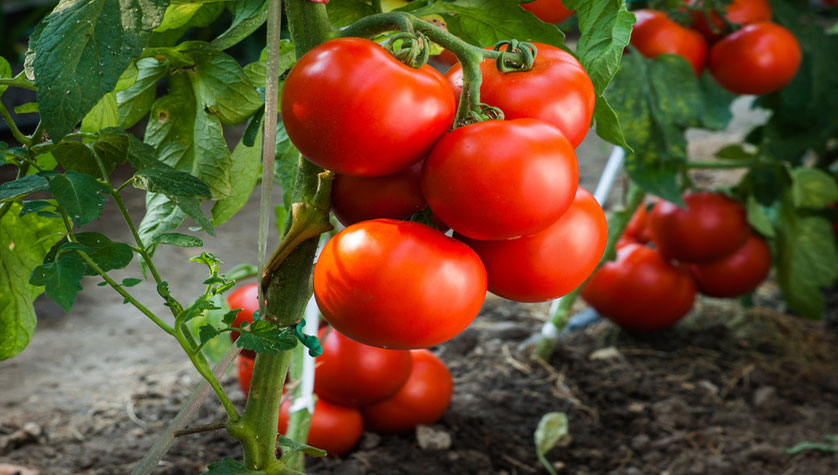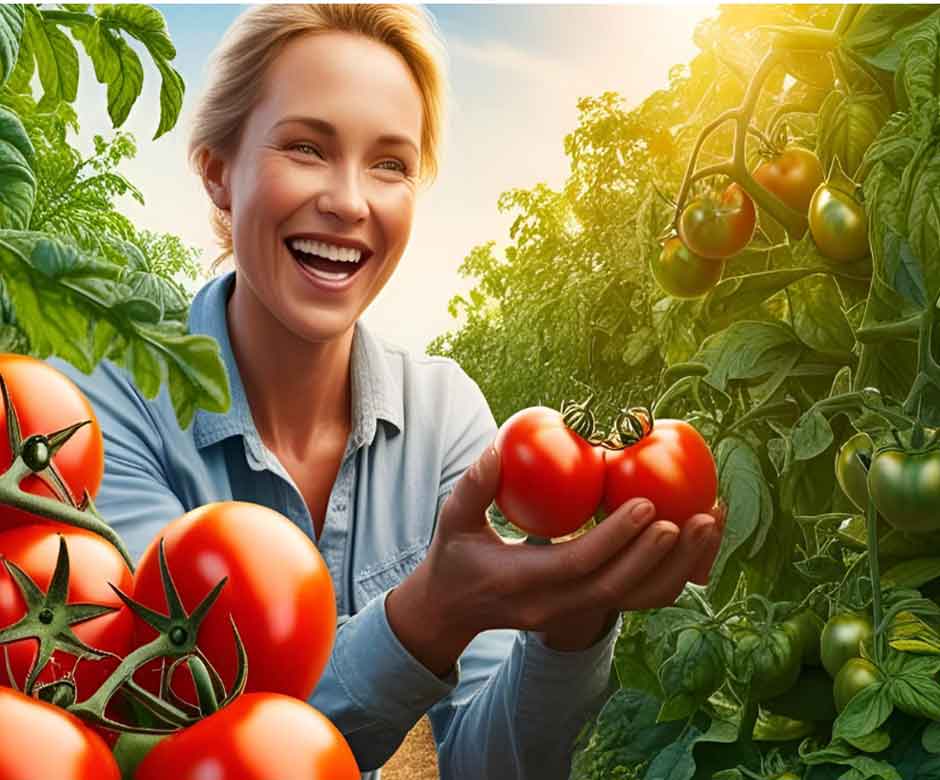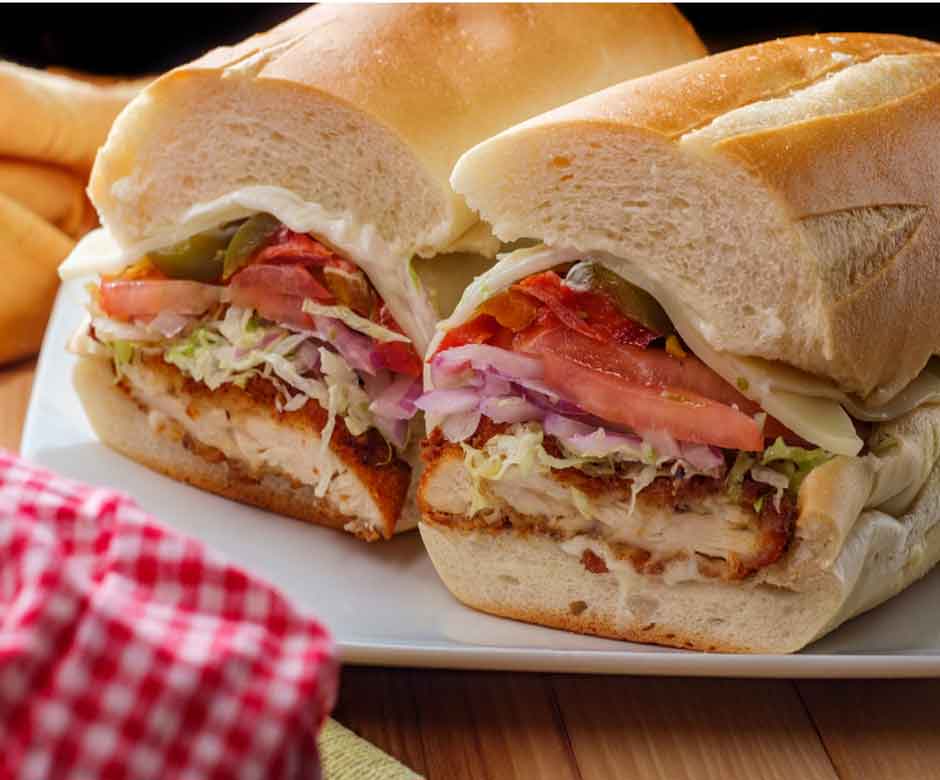New Jersey Tomatoes: What's all the Hype About?

New Jersey Tomatoes have received a great deal of notoriety as being the best in the nation for their flavor, tenderness, and juiciness.
All of it is certainly true.
Although ideal weather and soil conditions are certainly important, and New Jersey has plenty of loam and sandy loam soils that are best for tomato production, it is the variety of tomatoes which are rich in flavor, tenderness, and juiciness, the special growing care, and how long they remain on the vine to ripen, that gives New Jersey tomatoes it's notoriety.
According to Tom Orton, a professor in the Department of Plant Biology and Pathology at Rutgers, "Since the 1960s with the advent of commercial farming and machine harvesting, the old varieties of New Jersey tomatoes became too soft for commercial production. tomatoes like the softer, tastier Rutgers tomato became problematic for commercial farming.
Peter Nitzsche, an associate professor and agricultural agent for Rutgers Cooperative Extension, said "Many consumers believe they are buying Jersey tomatoes from the grocery store in the middle of the summer, but they are not. That is why people are often disappointed by the taste, "A lot of the fruit in the grocery store is picked green and ripened during long distance shipping,"
Today, most of Jersey tomato production comes from smaller, local, family owned farms who sell their tomatoes at local farm markets, and from home gardeners, who select varieties that are bred for their taste and not for long-distance shipping.
Tomatoes are the most popular vegetable grown by New Jersey gardeners
New Jersey tomatoes, planted as seedlings take 70-90 days to mature. The picking season depending on weather, can begin as early as mid-July and last until early October.
New Jersey Tomatoes: An Alternative To
The Breeding Of The Flavor Out Of Commercially Grown Tomatoes
Sometime in the 1950's, in response to demand from the large commercial farmers and shippers, tomato scientists and breeders developed hybrids, new cultivation techniques, shipping, and storage processes that became a boom to the tomato industry in being able to grow, ship and sell tomatoes in huge volumes across the country at a sizable profit.
While the shipping of tomatoes across the country without bruising made tomatoes available to everyone in the country at an affordable price, it unfortunately resulted in the breeding of the flavor out of the commercially grown tomato.
New Jersey, the most densely populated state in the nation, with virtually no large commercial vegetable farmers, was not in a position to compete with the large commercial farms from California, Florida, and Mexico. In Florida the tomatoes are picked green and gassed with ethylene to give them a redder glow before being shipped. In some cases, they may be picked with a longer vine ripening time but would then have to be refrigerated before they are shipped and refrigeration degrades the taste and nutrients. Tomatoes grown in Mexico where labor is cheaper than in California and Florida are usually tastier because many of the farms hand pick them after a longer period on the vine.
Why are New Jersey Tomatoes Tastier?
There is good news in all of this for New Jersey farmers in that it created a niche for them to operate in. Without having to concern itself with picking green, tasteless tomatoes that would have to withstand long periods of transport and storage, they were instead able to cultivate varieties of tomatoes that are stake grown to protect it from soil borne diseases, and picked when soft and vine ripened for immediate sale to the local markets and farm stands for the enjoyment of New Jersey consumers. Of course, the tastier tomatoes were able to command a higher price to off-set their higher growing costs.
Despite the success with their niche market, New Jersey farmers were only able to obtain seeds from the seed companies that favored varieties that produced higher yields for large commercial growers.
Although the taste of the New Jersey grown tomato is far superior to the large commercially grown farms, many of these varieties of seeds were limited in taste and not optimum for the smaller niche farmers.
The Ramapo Tomato: A Superior Tasting Tomato
for Small Commercial Farms and Home Gardens
In 1968, the Ramapo Tomato was developed at Rutgers University by Dr. Bernard Pollack. This tomato was a very tasty tomato that was ideally suited for east coast soil and weather conditions. The downfall was that the Ramapo variety, although superior in taste to the other varieties on the market, had limited demand, and virtually none from the large commercial farms. As a result of the low demand, the Ramapo seed soon disappeared from seed catalogs.
However, in response to public outcry for the Ramapo tomato, in 2008, Rutgers University re introduced the Ramapo seed for commercial production for the small farm/garden market. This initial release of only 8,000 seed packets was aimed at the small, niche farms and the home gardener who were willing to take special care and cost in the growing of Tomatoes to achieve the superior taste.
Contact Ramapotomato@njaes.rutgers.edu at Rutgers University if you are unable to obtain Ramapo Tomato seeds for your small niche farm or home garden.
The expectations are high for New Jersey (and east coast) tomato lovers that we will be seeing another wave of improved tasty tomatoes.
Tips On Storing Tomatoes
If you are looking for that great New Jersey tomato taste, you can either go to a local farm market in New Jersey or grow your own.
The season for purchasing or growing ripened tomatoes is mid-July to the 1st week in August.
Whichever method you choose to obtain your tomatoes, the two most important rules for preserving taste are:
- Do not refrigerate
- Do not set them out on a sunny window-sill to ripen. (Only tomato plants need full sun; picked fruit does not).




